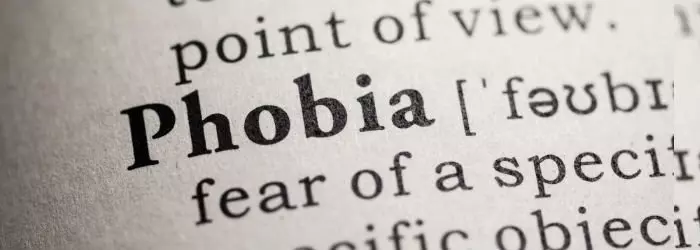What's the difference between fear and phobia?
There are many situations or objects that frequently trigger fear in people. A fear becomes a phobia when it is out of proportion with the real level of danger in a situation and when it leads to reactions that are extreme. For some people, phobias can significantly interfere with their life and their happiness.
A phobia is a very powerful fear of an object or situation. This fear is extreme – out of all proportion to the amount of real danger – and is much stronger than what most other people would experience in reaction to the same thing.
There are many different kinds of phobias. Some phobias are quite complex – a fear of social situations is a good example. This book deals with simpler fears, known as specific phobias. A specific phobia is a fear of a particular object or situation. People with specific phobias feel very anxious if they have to face up to their fear, and usually try to escape from the situation as quickly as they can. They may also feel anxious if they think they are likely to meet the feared object or situation in the near future. Because their fear is so extreme, they will often go to great lengths to avoid the particular object or situation that frightens them.
Some people with phobias are symptom-free as long as they can avoid the feared object or situation and – for the most part – they are able to carry on with their lives normally. However, phobias and the related anxiety can become so severe that they cause problems in day-to-day living. For example, fear of needles could stop someone from going for an important medical test, and a fear of thunderstorms could prevent someone from going outside every time it looked as if it might rain.
What are the symptoms of a phobia?
When people come into contact with the object or situation that terrifies them or leaves them panic-stricken, they experience a variety of symptoms. Physical symptoms of anxiety almost always occur. These may include increased heart rate, sweating, trembling, fast and shallow breathing, muscle tension or weakness, dizziness, ‘butterflies’ in the stomach, dry mouth and difficulty swallowing.
The ‘fight-or-flight’ response to threat
All this happens because when you feel afraid or threatened, your body becomes ‘activated’ to respond to the danger. This is known as the fight-or-flight response, which lets your body respond quickly and effectively to a physical threat. Our bodies release a chemical called adrenaline that triggers reactions such as:
- Your mind becomes alert and focused on the ‘threat’.
- Your heart rate speeds up and your blood pressure rises.
- Blood is pumped to your muscles, which tense in order to prepare for action.
- You start to sweat more to keep your body temperature from rising too high.
- Breathing becomes rapid and shallow to provide the body with more oxygen.
- Blood-clotting ability increases, preparing for possible injury.
Bodily processes that are not essential in an emergency, such as digestion and saliva production, slow down, causing a dry mouth, ‘butterflies in the stomach’ and, sometimes, nausea.
This fight-or-flight response was crucial in the distant past, when humans had to deal with physical dangers all the time. Even though we rarely face immediate physical danger in modern life, the fight-or-flight response is still very important as it helps us to respond quickly – for example, to move out of the way of an oncoming car. However, the fight-or-flight response doesn’t just happen in real physical emergencies – it ‘kicks in’ any time we are nervous about something. And this includes situations when a physical response is not usually required. So, even if the apparent danger doesn’t present a genuine physical threat, our bodies still react as though it does.
‘Fleeing’, ‘freezing’ and avoidance
Someone with a phobia confronted with the thing they fear tends to behave in one of three ways. Some people ‘flee’ – they leave or get out of the way as speedily as possible. Others ‘freeze’, feeling that they are unable to move. However, most people with phobias use avoidance – if an object or situation causes anxiety, they try to stay as far away as possible! Some people avoid only a few things, but for others, avoidance can spread to a great many objects and situations and this becomes very problematic.
Faced with a real danger or threat, it would be wise to get away from the situation and avoid similar situations in the future. Likewise, in some threatening situations, staying very still could prevent you from being noticed, which could be a life-saver. However, with phobias, these responses are not helpful. Not only are they unnecessary (remember that the fear is out of proportion to the amount of real danger), but they can also strengthen the phobia and make it harder to overcome.





